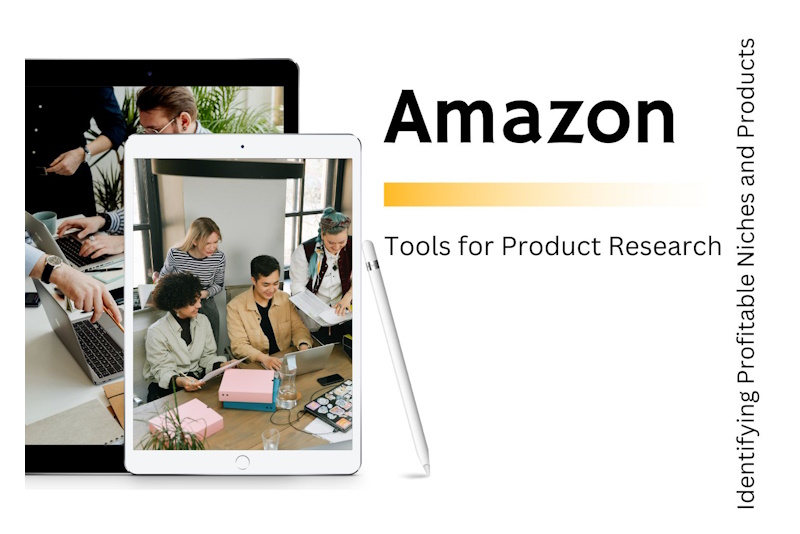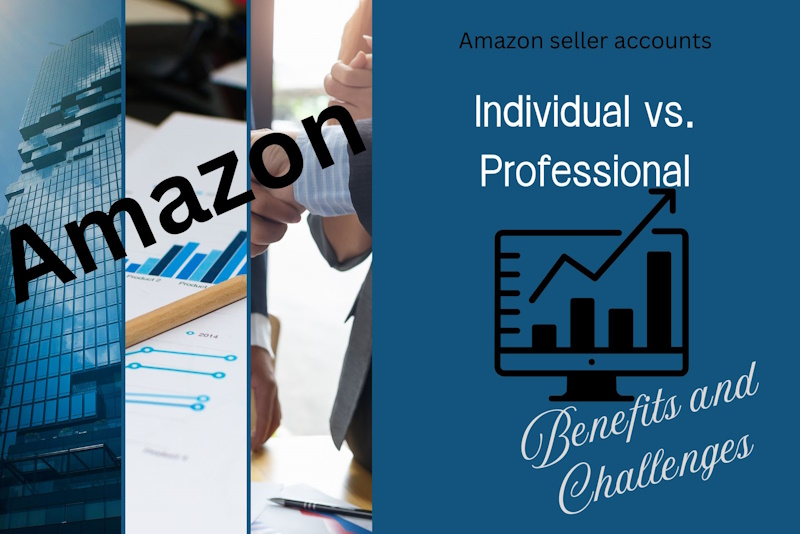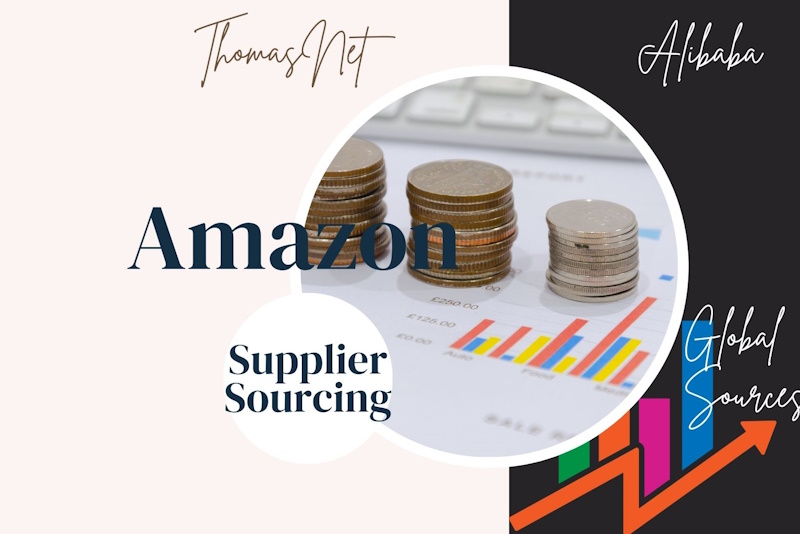How to Find Profitable Niches and Products for Your Amazon Business
One of the most critical steps to building a successful Amazon business is choosing the right products to sell. Identifying profitable niches and selecting the best products can make or break your venture. In this post, we’ll cover everything you need to know about product research and selection, including how to find winning products, the tools you can use, how to analyze competition, and product sourcing strategies for both domestic and international suppliers.
Identifying Profitable Niches and Products
When starting on Amazon, finding the right product is crucial. You want to choose items that not only sell well but also offer healthy profit margins. Here’s how you can identify profitable niches:
1. Look for Products with Consistent Demand
- Products that sell year-round are ideal. Seasonal items can be profitable but require you to carefully manage inventory.
- Focus on products that people need regularly, like household goods, fitness equipment, or office supplies.
2. Find Products with Low Competition
- Avoid overly saturated niches where major brands dominate.
- Focus on niche products with smaller, specific audiences, as competition tends to be lower.
3. Look for High-Profit Margins
- Calculate your product’s costs, including manufacturing, shipping, and Amazon’s fees (referral, FBA, etc.).
- A good rule of thumb is to aim for at least a 30% profit margin.
4. Choose Lightweight and Small Products
- Products that are light and easy to ship will save you on fulfillment and storage costs. This is especially important if you are using Amazon’s FBA service, as heavy or bulky items incur higher fees.
5. Consider Products that Solve Problems
- Products that address common problems or pain points are more likely to be successful. Think about products that offer convenience, save time, or provide solutions in daily life.
Tools for Product Research
Manually finding profitable products can be time-consuming, but there are powerful tools that can help you streamline the process. Here are some of the best Amazon product research tools:
1. Jungle Scout
- Overview: One of the most popular tools for product research, Jungle Scout helps sellers find profitable products, track competitors, and validate product ideas.
- Key Features:
- Product database and filters for narrowing down niches.
- Chrome extension for analyzing product listings in real-time.
- Sales data, trends, and revenue estimates.
- Best For: New sellers looking for an easy-to-use tool with comprehensive data.
2. Helium 10
- Overview: Helium 10 offers a full suite of tools for product research, keyword optimization, and tracking sales performance.
- Key Features:
- X-Ray tool for product analysis and sales estimates.
- Black Box feature to discover profitable product niches based on specific criteria.
- Keyword research tools for optimizing your product listings.
- Best For: Sellers who want an all-in-one solution with advanced analytics for both product research and listing optimization.
3. AMZScout
- Overview: Similar to Jungle Scout, AMZScout is another popular tool for product research and competitive analysis.
- Key Features:
- Product tracker for monitoring competitors.
- Keyword research tools.
- Estimations on sales volume and profitability.
- Best For: Sellers looking for a budget-friendly alternative to Jungle Scout.
4. Google Trends
- Overview: While not specific to Amazon, Google Trends helps you gauge interest in specific products or categories over time.
- Key Features:
- Shows how often a product is searched for on Google.
- Identifies seasonal trends and helps you predict future demand.
- Best For: Gaining insights into market trends and discovering growing product categories.
Analyzing Competition and Market Demand
To ensure success, you need to analyze both your competition and the demand for your products. Here’s how to do it:
1. Check Competitor Listings
- Search for similar products on Amazon to see who your competitors are. Pay attention to their prices, reviews, and how they are positioning their products.
- Analyze the top-performing listings in your niche. Look at their product titles, descriptions, images, and customer reviews.
2. Look for Weaknesses in Competitor Products
- Customer reviews are gold mines for product insights. Look for common complaints in reviews and see if you can offer a solution in your product.
- Check if competitors are lacking in areas like customer service, product packaging, or product features, and consider how you can differentiate your product.
3. Use Data to Gauge Market Demand
- Use tools like Jungle Scout or Helium 10 to analyze market demand based on sales volume, search volume, and trends.
- Products that consistently show strong demand and have room for new competitors are ideal.
4. Check the Buy Box Percentage
- The Buy Box is where most sales on Amazon are made. If a single seller dominates the Buy Box for a product, it might be difficult to compete. Consider entering niches where the Buy Box is shared among multiple sellers.
Product Sourcing Strategies
Once you’ve identified a profitable product, the next step is sourcing it. Here are two primary sourcing options:
1. Domestic Sourcing
- Pros:
- Faster shipping and delivery times.
- Easier communication with suppliers due to time zone and language similarities.
- Higher perceived quality (especially for specific products like food or cosmetics).
- Cons:
- Generally higher production and manufacturing costs.
- Limited variety of products compared to international suppliers.
- Best For: Sellers who prioritize quality, faster lead times, and are targeting a local or premium market.
2. International Sourcing (e.g., China via Alibaba)
- Pros:
- Lower production costs, leading to higher profit margins.
- A vast array of products and customization options.
- Cons:
- Longer lead times due to shipping.
- Potential language barriers and quality control issues.
- Additional import duties, tariffs, and customs complexities.
- Best For: Sellers looking for cost-effective products or large-scale manufacturing.
3. Private Labeling vs. Wholesaling
- Private Labeling: You purchase generic products from a manufacturer and add your own brand or logo. This allows for customization and building a unique brand presence on Amazon.
- Wholesaling: You buy existing products in bulk from a supplier and sell them on Amazon. This method can be quicker to get started but may face more competition as you’re selling identical products to others.
Pro Tip: Start by ordering small quantities to test the product’s quality and demand. Once you’ve validated the market, scale your orders accordingly.
Product research and selection are the cornerstones of a successful Amazon business. By identifying profitable niches, using the right research tools, and carefully analyzing competition, you can find the right products to sell. Additionally, choosing the right sourcing strategy — whether domestic or international — will ensure you can deliver high-quality products at competitive prices. With the right research and strategy, you’ll be well on your way to building a thriving Amazon business.
Ready to start your product research? With the tools and tips mentioned here, you’re set to find winning products that can drive your success on Amazon.




